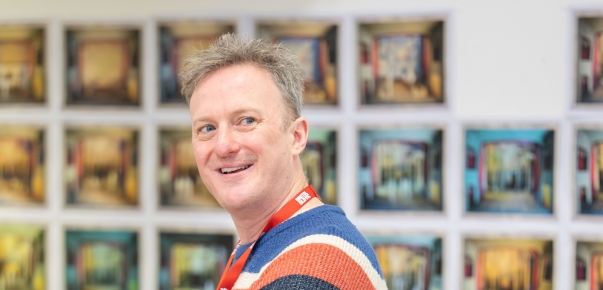Jane Eyre: In Conversation
17 Jan 2014Artistic Director Tom Morris speaks with actors Madeline Worrall and Felix Hayes about the highlights and challenges of creating Jane Eyre.
[gallery type="slideshow" ids="176470588,176470589,176470590,176470591,176470592,176470593,176470594,176470595"]
So Jane Eyre is a devised show, what does that mean?FELIX HAYES: Well I suppose it means we start with the book and eight and a half weeks later we end up with a finished product. It’s not like a normal play where you enter with a piece that is fully formed; we create it organically as we go – which is quite an exciting thing.
MADELEINE WORRALL: It may seem like a straight forward thing to do - taking the dialogue out of the book and then saying it – but in reality this would be very boring. A lot of the dialogue does come from the book but you have to strip it down an awful lot. But as soon as you start dismantling it you have to try and make it make sense!
FH: And then you have that amazing thing that theatre does with music, or movement, or sound that creates so much in one moment without all the words.
So what is it about this character Jane Eyre that makes you want to play her, that makes you want to recreate her for an audience now?MW: She’s tough I think, tough and strange and unapologetic. One of things we’ve struggled with is the internal voice of Jane. A lot of what we know about Jane from the book is what’s going on in her head but we can’t just have someone talking and reading her thoughts. So the ensemble often characterise what Jane is thinking. This doesn’t have to be words; sometimes it can just be a look, or the lighting and music. It’s a sort of symbiotic relationship between Jane and her thoughts and a wider consciousness.
So is it a kind of theatre that completely mixes the visual and the musical and the verbal?MW: Yes, it’s all completely integrated. Sally (director) is very good at not using too many words. She lets the music speak for itself and lets the audience make links in their own heads. Sally’s brilliance I think is she understands completely what is important to the story and she doesn’t try and impose all kinds of modern stuff for the sake of it; but at the same time she brings something completely new. It will be beautiful and fresh and strange and other-worldly.
What sort of a love story is it? Jane and Rochester meet when he falls off his horse, can you tell us about that?FH: It’s a real love story. It’s got grit and they get it wrong; it’s a kind of damaged love story. It feels so much more real that these two people find each other and find solace with each other. I think it was the non-fairy-tale nature of the love story that I really, really like.
TOM MORRIS: It is also worth saying that Felix Hayes is probably the funniest man in Bristol! Having seen him in Andrew Hilton’s production of A Midsummer Night’s Dream essentially destroy the audience by himself by the way he was standing holding a rock, I wonder, do you get much scope for that in Jane Eyre? Are there any laughs?
FH: Well, I think Rochester is funny! He’s so full of whit; he’s so dry and cutting. You can think of it as a very dry love story but actually it is full of heart and there are funny sparks and delightful turns.
What have you been using for inspiration to devise Jane Eyre?MW: We’ve been using a picture board for inspiration. In the book when Jane paints pictures you imagine drippy water colours of flowers. But she is someone with a very visual imagination. We’ve been using some incredibly melodramatic, passionate paintings from English Romantic painters like John Martin to help us visualise.
I think what puts a lot of people off Jane Eyre is a) they did it at school, and it was boring, and b) there are boring portraits of Victorian women on the covers! Whereas what we’re using as an interesting starting point are images from the artist Paula Rego. They turn that view all on its head – they’re strange and grotesque and brilliant and human and broken. They are so much more interesting and say so much more about the nature and quality of the story.
The way you’re talking about the story it doesn’t sound like an old historic story, it sounds like it’s topical and means something today and is relevant in the 21 century. What is it about it that makes you want to work on it now?FH: I think it’s an incredibly modern love story. The emotions remain the same between two people, it’s still and incredibly modern themed book. And the ideas in it are modern.
MW: The narrative voice is really acerbic and difficult and searching and questing and interested in why women should have to put up with embroidery or stuffing a turkey; that is a real preoccupation of the book – where is your freedom and where is your choice? It questions how someone can live as a woman, and as a man trapped by the same sort of things, in a community that doesn’t allow you freedom.
Rehearsal photography by Simon Annand


